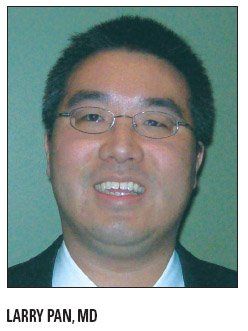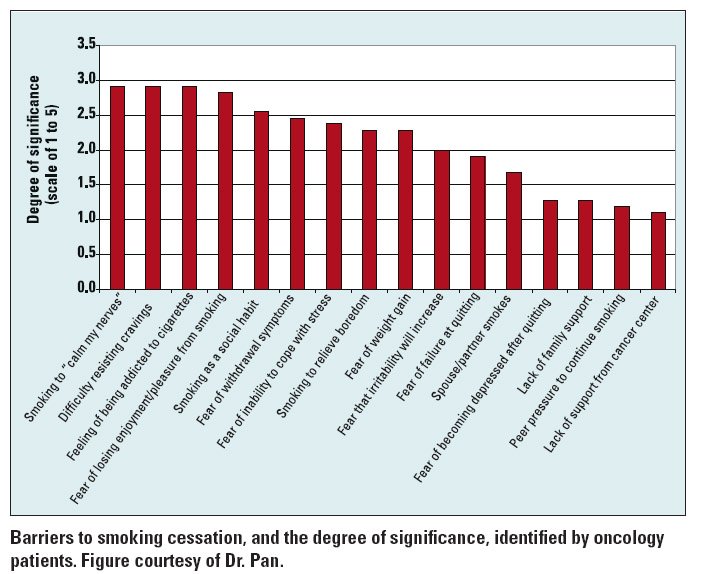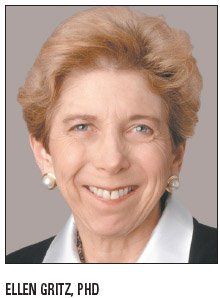Smoking cessation requires unremitting reinforcement
Quitting smoking during radiation treatment for lung and head and neck cancer significantly enhances treatment efficacy, yet many patients will not give up the habit even though the benefits are very obvious.
ABSTRACT: For a smoker with a cancer diagnosis, taking that last puff would seem to be the obvious choice. But patients are often reluctant to do so even when treatment is well under way.
Quitting smoking during radiation treatment for lung and head and neck cancer significantly enhances treatment efficacy, yet many patients will not give up the habit even though the benefits are very obvious.

In fact, “the magnitude of improved response rates from smoking cessation may be even greater than seen with chemotherapy or radiosensitizers,” said Larry Pan, MD, a clinical fellow in radiation oncology at Memorial Sloan-Kettering Cancer Center in New York.
During his residency at Juravinski Cancer Centre at McMaster University in Hamilton, Ontario, Dr. Pan conducted a two-phase study to determine tobacco use in patients receiving radiation therapy for lung or head and neck (H&N) cancer. He also looked at tobacco use and barriers to quitting in this patient population as well as the success of cessation counseling.
He found significant barriers to quitting, with patients caving to cravings or outright refusing to give up the calming effect of smoking. Dr. Pan, along with other radiation oncologists, shared with Oncology News International some of the more successful intervention techniques.
Smoking to relieve stress
Dr. Pan built on research done by George P. Browman, MD, and colleagues that evaluated the influence of cigarette smoking during radiotherapy in 115 patients with locally advanced H&N cancer. Response was assessed 13 weeks after completion of treatment. They found that the rate of complete response for the 53 patients who continued to smoke was 45%, compared with 74% for the 62 patients who stopped smoking. The two-year survival rate was 39% for the smokers and 66% for those who quit.
Mortality rate was influenced by the length of time between quitting smoking and beginning cancer treatment, with a risk reduction of 40% for patients who had quit less than 12 weeks before diagnosis and 70% for those who had quit more than one year before.

After adjustment for other variables, smoking remained an independent prognostic factor, and the results could not be explained by type of chemotherapy, presence of coexisting morbidity, and differences in the adverse effects of radiation, Dr. Browman’s group wrote (N Engl J Med 328:159-163, 1993).
For his study, Dr. Pan obtained data via self-administered questionnaires and/or structured interviews. The study included 134 patients whose charts were reviewed to determine their smoking status (as documented by physicians) and any cessation counseling offered.
According to the results, 31% of the patients with H&N cancer continued to smoke, while 12% quit shortly before starting treatment. Of those with lung cancer, 11% continued to smoke and 23% quit before beginning therapy (RSNA 2008 abstract SSE24-06). “The percentage of patients who continued to smoke during radiotherapy was higher for H&N cancer than for lung cancer, and more lung cancer patients actually quit,” Dr. Pan said. He speculated that patients were aware of the association between smoking and lung cancer and that it was likely that smoking caused their cancer. The association between smoking and H&N cancer was less well known.
Patients who continued to smoke cited a variety of reasons why they were unable to quit, including overwhelming cravings, inability to cope with stress, and lack of support from their treatment center for smoking cessation (see Figure).
The study also noted the barriers that physicians said they faced when it came to smoking cessation counseling:
• Lack of time during clinical consultations
• Belief that counseling is the responsibility of a general practitioner and not the oncologist
For patients who did manage to quit, incentives included the cancer diagnosis, the cost of cigarettes, and pressure from others to give up the habit. More than half of the patients said that their quality of life (QOL) improved once they had quit smoking.
When asked how many patients had tried to quit but failed, Dr. Pan said there is no way to know, but most likely, all patients have tried to quit at some time. “The majority tried many times and had frequent relapses. But a malignancy attributable to tobacco use appears to be when patients are most receptive to behavior change.”
Not only is addressing tobacco use a key element in the care of cancer patients, but “knowledge gained from my study about barriers to cessation is of immense value to society as a whole,” he said.

Whose responsibility is it?
Dr. Pan noted that smoking cessation is covered in the primary care and prevention literature but that “there is little on the topic in clinical oncology centers, where one sees the most dramatic consequences of tobacco use.”
A commentary by Ellen R. Gritz, PhD, and colleagues of Houston’s M.D. Anderson Cancer Center recommended that smoking history and status be “systematically collected as core data in all oncology clinical trials: at diagnosis, at trial registration, and throughout treatment and follow up. These data will add important information to interpretation of outcomes” (Cancer Epidemiol Biomarkers Prev 14:2287-2293, 2005).
After all, increasing evidence has shown that smoking has direct and indirect, short- and long-term effects on cancer treatment, toxicity, morbidity, recurrence, second primary tumors, survival, and QOL, they wrote.
These are uniformly negative, said Dr. Gritz, although the longer the time since cessation, the lower the risks, and stopping smoking, even at diagnosis, significantly reduces the risk of second primary tumors. Included in the deleterious effects of smoking during cancer treatment are:
• Severe pulmonary complications following surgery, especially pneumonectomy
• Compromised wound healing as a result of the vasoconstrictive action of nicotine
• Reduced efficacy of radiotherapy, as well as increased toxicity in H&N cancer
• Increased risk of small-bowel complications during pelvic radiation for cervical cancer
In the rare instances when these data are collected, it is almost always only at trial registration, and changes in smoking status are not noted because patients aren’t asked about it, Dr. Gritz and colleagues wrote.
Dr. Pan said providers and patients need to share in the responsibility of smoking cessation. “I believe strongly in autonomy, so our goal should be to provide the best possible patient education, but ultimately patients choose their own course of action,” he said.
What works
What makes for a successful cessation program? Programs with the highest quit rates combine psychological advice; behavioral counseling; and pharmacologic agents, including bupropion, nicotine replacement, and a nicotinic receptor partial agonist such as varenicline (Chantix), according to Dr. Gritz. The more intense the behavioral counseling, the better the results will be.
“The best source for establishing and maintaining a program is Treating Tobacco Use and Dependence, 2008 Update, published by the Department of Health and Human Services” she said. It contains guidelines for clinicians and patients, as well as how to establish and run a program (surgeongeneral.gov/tobacco).
“At the Juravinski Cancer Centre, every patient at the time of admission and at every follow-up visit is asked if they smoke,” Dr. Pan said. “If they do, we refer them to the public health clinic for intervention. If patients don’t want to attend, they’re given information about a smokers’ help line.”
At M.D. Anderson, there’s an emphasis on getting physicians to see that they do have the knowledge and skills to help patients, and on referral to the institution’s Tobacco Treatment Program, Dr. Gritz said.

The program is staffed by a multidisciplinary team (physicians, psychologists, physician assistants, nurses) who help patients as well as their family members quit smoking. The program is free and also open to M.D. Anderson Cancer Center employees.
Gregory Videtic, MD, from the Cleveland Clinic said he believes that no one smoking program is a one-size-fits-all prospect. “Providers must initiate the dialogue about quitting, but patients must be willing to take that first step. Rather, it’s a matter of matching patients’ personality and interests to one of many programs. Support from and involvement of physicians is critical to success,” he said (see Vantage Point).
At the H. Lee Moffitt Cancer Center and Research Institute in Tampa, Fla., Thomas J. Dilling, MD, said he refers patients to an in-house program and stresses the various ills associated with smoking. “Nicotine addiction is highly insidious and very difficult to break, and when patients are confronted with a cancer diagnosis, they face additional stress, which might impel them to smoke,” he said. “No cessation program will succeed if the patient is unwilling to try. I support my patients in their effort to quit, and I tell them that I know how hard it is. Some succeed and then relapse, but I explain that each successive attempt is more likely to be successful.”
Newsletter
Stay up to date on recent advances in the multidisciplinary approach to cancer.